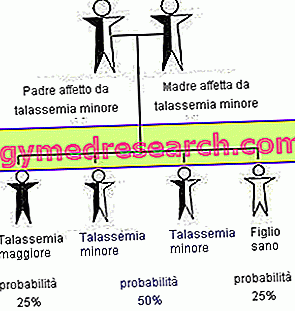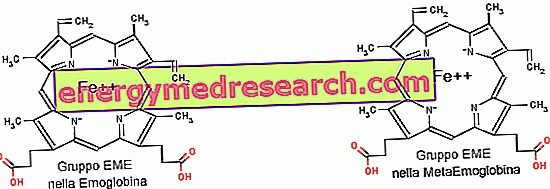Definition Macrocytosis is a condition in which red blood cells are larger than normal. Macrocytes in the blood can be found in some forms of anemia (sideroblastic, pernicious, aplastic and megaloblastic). Macrocytosis is frequent in the presence of deficiency or defective use of vitamin B12 or folate; this manifestation can be associated with malnutrition, alcoholism, pregnancy (due to increased needs), tropical sprue and gastrointestinal diseases, such as celiac disease and Crohn's disease
Category blood health
Sports anemia is often caused by a lack of iron. This deficiency occurs mainly in endurance athletes and may depend on inadequate intake, poor absorption and increased losses. INCREASE OF GASTROINTESTINAL IRON LOSSES: Gastrointestinal iron losses in the sedentary subject represent about 60% of the losses (excluding menstrual ones) and are mainly represented by small blood losses (about 1 ml / day) and the breakdown of red blood cells (hemolysis)
Generality The term "haemolytic anemia" is used to indicate a set of blood disorders, characterized by a shortening of the average life of the circulating red blood cells and their premature destruction (extravascular and / or intravascular hemolysis). Furthermore, in the case of hemolytic anemia, the synthesis of new red blood cells by the erythropoietic system is insufficient to compensate for their loss
Definition of thalassemia Thalassemia is a genetically transmitted blood disease, in which the body synthesizes an abnormal form of hemoglobin. As is known to most, hemoglobin is a protein contained in red blood cells, essential for the transport of oxygen in the blood. In subjects suffering from thalassemia, the mutated form of hemoglobin causes the gradual but inexorable destruction of red blood cells, up to anemia
Generality The thrombus is a solid mass consisting of red blood cells, platelets, fibrin and white blood cells, the result of alterations affecting the vasal endothelium, blood flow and / or blood clotting mechanisms. A thrombus can form inside the arterial or venous blood vessels, just as it can form at the heart level
Methaemoglobin is a protein similar to hemoglobin, from which it differs due to the different state of iron oxidation. In fact, the iron present in the -EME group of methaemoglobin is oxidized to ferric ion (Fe3 +), while in hemoglobin it is found in the form of ferrous ion (Fe2 +). The passage of iron oxidation from a bivalent state to a trivalent state, makes the methaemoglobin incapable of carrying oxygen in our body
The hematologist is an internal medical doctor specialized in hematology , that is the branch of internal medicine that studies the blood in all its components and in all its aspects, including the organs that produce it (hematopoietic organs) and the diseases that can affect it. SOME DETAILS MORE ABOUT BLOOD COMPONENTS AND HEMOPOIETIC ORGANS The blood consists of a liquid component, called plasma , and a cellular component
Some serious blood diseases - including so-called aplastic anemia, leukemias, lymphomas and genetic blood diseases - arise due to damage to the bone marrow , or the soft tissue that produces blood cells (red blood cells, white blood cells and platelets). When the damage is profound and the response to less invasive treatments is ineffective, the conditions exist to intervene with a particular, very delicate and complex medical procedure called bone marrow transplantation
Bone marrow transplantation , also known as hematopoietic stem cell transplantation , is the medical procedure by which a damaged bone marrow is replaced with a healthy bone marrow , in order to restore normal blood cell production. It is a delicate, complex treatment that is only performed under certain conditions; among these, we note in particular: an optimal patient's state of health (in spite of the illness that afflicts him) and the impracticability (because ineffective) of any other alternative treatment
Some serious blood diseases - including so-called aplastic anemia, leukemias, lymphomas and genetic blood diseases - arise due to damage to the bone marrow , or the soft tissue that produces blood cells (red blood cells, white blood cells and platelets). When the damage is profound and the response to less invasive treatments is inadequate , the conditions exist to intervene with a particular, very delicate and complex medical procedure called bone marrow transplantation
Bone marrow transplantation , also known as hematopoietic stem cell transplantation , is the medical procedure by which a damaged bone marrow is replaced with a healthy bone marrow , in order to restore normal blood cell production. It is a delicate, complex treatment that is only performed under certain conditions; among these, we note in particular: an optimal patient's state of health (in spite of the illness that afflicts him) and the impracticability (because ineffective) of any other alternative treatment











